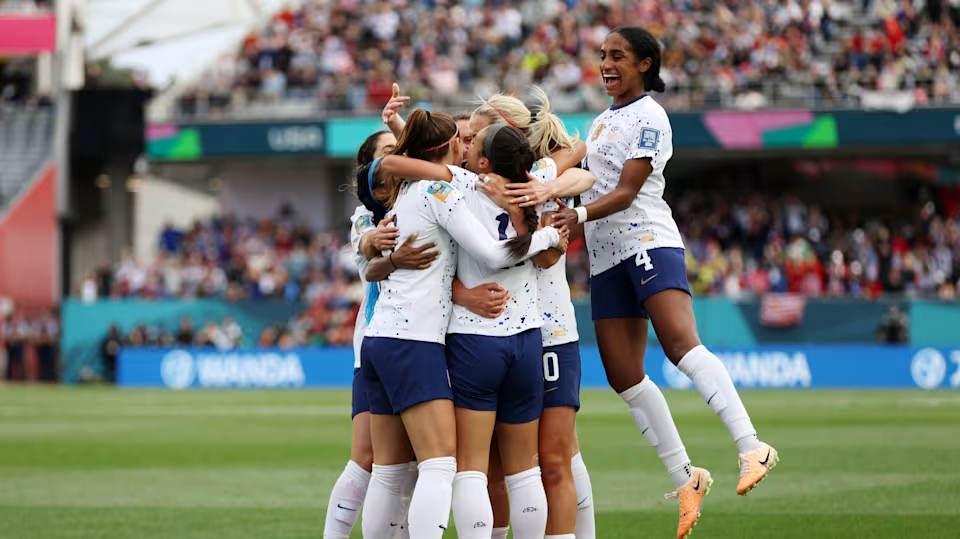Women’s Football is Growing in Popularity
Women’s football has entered a new era. No longer just a fringe movement, it is now a fast-growing global force that is breaking attendance records, gaining massive broadcast deals, and inspiring the next generation of athletes and fans alike. From sold-out stadiums in Europe to record-breaking TV audiences in North America and Asia, the rise of the women’s game is not just impressive—it’s historic. As more people engage with women’s football through social platforms, sports communities like DIS88 have helped amplify this movement by sharing news, opinions, and match highlights to millions of fans around the world.
But what’s fueling this surge in popularity? Let’s explore the reasons behind the meteoric rise of women’s football and what the future holds.
Global Growth: From Grassroots to the World Stage
One of the key drivers of women’s football’s growth is the expanding grassroots participation and investment in local leagues. Across countries like England, the United States, Australia, and Spain, youth enrollment in girls’ football has soared. Young girls now grow up watching role models like Alexia Putellas, Sam Kerr, and Alex Morgan dominating on the world stage.
The 2023 FIFA Women’s World Cup held in Australia and New Zealand shattered previous attendance records, drawing over 2 million fans to stadiums and engaging more than 1.5 billion viewers worldwide across various platforms. It wasn’t just a sporting success—it was a cultural moment.
This kind of mainstream exposure is crucial. Once considered a niche event, the Women’s World Cup now generates buzz equal to, and sometimes surpassing, its male counterpart in certain markets.
Club Football is Catching Up
While national teams have long held the spotlight in women’s football, club-level growth is now accelerating rapidly. In England, the Women’s Super League (WSL) has grown in stature, attracting top international talents and securing TV rights deals with Sky Sports and the BBC. In Spain, FC Barcelona Femení is filling Camp Nou with crowds exceeding 90,000 spectators.
Clubs that traditionally focused only on men’s football—like Real Madrid, Manchester United, and Juventus—are now investing heavily in their women’s teams. Sponsorships are growing, prize money is increasing, and matchday atmospheres are becoming more electric.
This is a key shift: the structure of regular league football gives fans consistency, rivalries, and a deeper emotional connection. As more fans get attached to clubs and players, women’s football is becoming part of the weekly conversation, not just a tournament-specific interest.
The Role of Media and Visibility
Media coverage has long been a barrier for women’s sports—but that’s changing. More matches are being broadcast on major networks, more journalists are covering the women’s game, and social media is amplifying everything from goal highlights to post-match interviews.
The role of platforms like DIS88, Twitter (X), Instagram, and TikTok cannot be overstated. These outlets give women’s football visibility in real-time, and they provide fans with the kind of access and interaction that was once reserved for the men’s game.
Moreover, many streaming services are investing in dedicated women’s sports coverage. This shift is crucial because visibility leads to viability—when people see the game, they begin to support it.
Cultural Shifts and Gender Equality
The growth of women’s football is part of a broader cultural movement toward gender equality in sports. Advocates, players, and fans have pushed for equal pay, equal resources, and better working conditions. And while there’s still a long way to go, progress is evident.
In 2022, the U.S. Women’s National Team reached a landmark agreement with U.S. Soccer to secure equal pay with the men’s team, including equal sharing of World Cup prize money. This was a pivotal moment, one that inspired similar conversations in countries like Australia, Norway, and the Netherlands.
More importantly, it sent a message: women’s football is not just growing in popularity—it’s demanding equal respect.
Role Models and Marketability
Today’s women footballers are not just athletes—they’re icons. Players like Ada Hegerberg, Megan Rapinoe, Leah Williamson, and Marta have transcended their sport, becoming global ambassadors for both football and social change.
Brands are taking notice. Endorsements for female footballers are increasing, and companies are realizing that supporting women’s sports is not just ethical—it’s smart business. From Nike and Adidas to luxury brands and tech giants, the marketability of female players is booming.
With high-profile athletes using their platforms to speak out on issues like racism, LGBTQ+ rights, and gender equality, the women’s game has become a voice for progress and inclusion.
Challenges That Remain
Despite the surge in popularity, challenges still exist. Many domestic leagues still struggle with funding, infrastructure, and media exposure. Wage disparities between men’s and women’s players are still significant in most countries.
Additionally, there’s the issue of youth development. While top nations are investing in academies and scouting for young girls, other regions still lack the infrastructure to nurture future stars.
Broadcasting contracts for women’s leagues also vary dramatically. Some leagues offer full-season coverage, while others rely on patchy, limited broadcasts or online-only streams. For the sport to grow globally, consistency in coverage is vital.
The Future Is Bright
Still, the trajectory is undeniable. Women’s football is no longer a growing sport—it’s a surging one. With the 2027 Women’s World Cup on the horizon, expanding Champions League formats, and increasing interest from fans and sponsors alike, the foundation for a thriving global ecosystem is already in place.
The next step? Make it sustainable.
Investments must continue. Stadiums must open more seats. Media must treat women’s football with equal weight. Fans must keep showing up—and based on current trends, they will.
Conclusion
Women’s football is no longer waiting in the wings—it’s stepping into the spotlight. Whether it’s packed-out stadiums, viral goals, or landmark legal wins, every piece of momentum is pushing the game forward. And thanks to platforms like DIS88, which keep the conversation going and bring fans together from around the world, the movement is gaining power daily.
The world is watching. The fans are cheering. And women’s football is rising, not as a side show, but as a spectacle in its own right.
The game is on.












